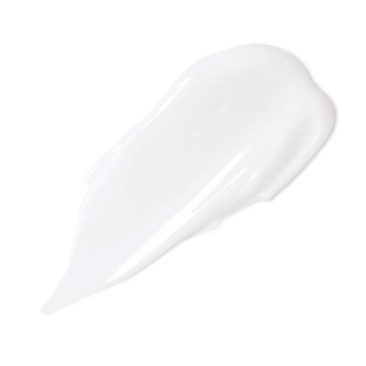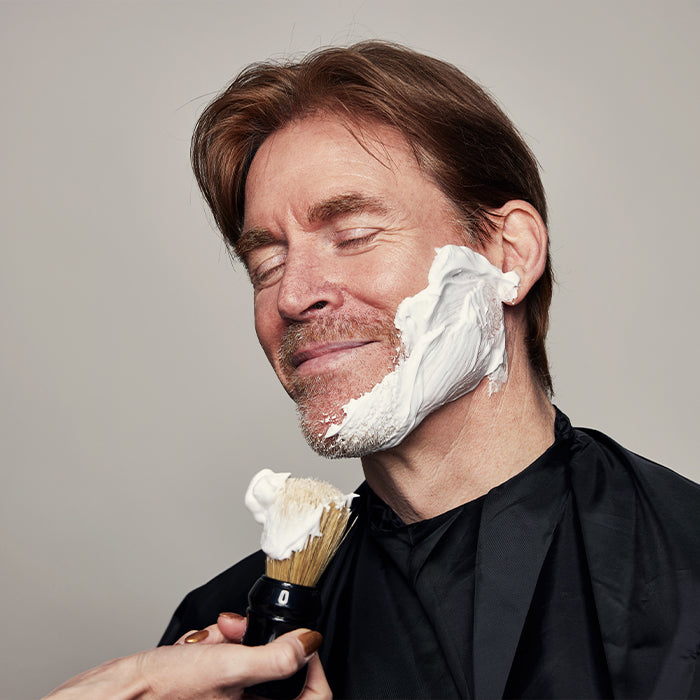De lente is begonnen, de zon schijnt weer en we bouwen op naar de tropische zomermaanden. Tijd om je zonnebedje uit te klappen, een ijskoud biertje erbij te pakken, Vamos a la playa door je speakers te pompen en een mooi bruin kleurtje te gaan kweken. Helaas gaat dit scenario toch niet zonder enig gevaar.
De zonsterkte neemt ieder jaar wat meer toe, dus extra reden om jezelf te beschermen. Helaas krijg één op de zes Nederlanders jaarlijks te maken met huidkanker, ondertussen één van de meest voorkomende vormen van kanker. Dermatologen en artsen zien vormen van huidkanker, veroorzaakt de zon, steeds meer toenemen. Daarom is het tijd om hier even wat extra aandacht aan te besteden.
UV-straling
UV staat voor ultraviolet, deze straling is afkomstig van de zon. Deze straling brengt niet alleen negatieve gevolgen met zich mee, gezien er zonder deze UV-straling geen leven op aarde mogelijk zou zijn. Niet geheel onbelangrijk dus. Helaas zorgt deze straling er ook voor dat je huid flink kan verbranden en dat je nare ziektes of beschadigingen kan krijgen. Met de juiste zonbescherming kan je deze schade voorkomen.
Drie soorten straling
UV-straling is onder te verdeling in drie categorieën:
- UV-A straling
- UV-B straling
- UV-C straling
De UV-C straling is niet zo bekend en voor ons ook niet schadelijk. De UV-C straling komt namelijk niet door de ozonlaag heen. UV-A en UV-B straling zijn de bekendere versies. UV-B straling heeft invloed op de opperhuid en zorgt ervoor dat we de belangrijke vitamine D3 opnemen. Wanneer je te lang in de zon zit, verbrandt de huid en ontstaat er schade.
UV-A straling gaat nog wat dieper je in huid in en zorgt daarmee voor de bruine kleur op je huid. Uiteindelijk kan deze straling zorgen voor een verstoring van de cellen. Dit kan dan ook de oorzaak van huidkanker zijn. Ook zorgt de UV-A straling voor veroudering van je huid. Allemaal geen fijne bijwerkingen, daarom is het juist zo belangrijk om goed te smeren met een zonnebrand die bestand is tegen UV-A straling.
Zonkracht
Zonkracht is de term die gebruikt wordt om de straling uit te drukken. De zonkracht is onder te verdelen van zonkracht 1 tot 10. De meeste Nederlanders verbranden bij zonkracht 8 of hoger. Tenminste, als je geen bescherming gebruikt.
Vergeet niet dat er zelfs op een bewolkte dag 40% van de UV-straling onze huid bereikt. Dit houdt in dat er ook in de lente, herfst en winter de zon schadelijk kan zijn. Blijf daarom smeren. In dit geval zal een SPF 15 of SPF 30 de meeste Nederlanders genoeg beschermen.
SPF
Iedereen is wel bekend met de term SPF. Maar wat is het nou precies? SPF staat voor “zonnebeschermingsfactor”. Je weet vast wel hoe hoger de SPF is, hoe beter de bescherming tegen de zon, maar toch bestaat er nog best wat verwarring over SPF. Het nummer dat volgt op het woord SPF vertelt je hoe lang het duurt voordat UV-straling jouw huid rood kan maken versus de tijd zonder bescherming.
Stel dat je normaal gesproken na 10 minuten zou verbranden, dan zou je met factor 30 pas na 10 x 30 = 300 minuten verbranden en bij een factor 50 na 500 minuten. Hoe hoger de zonkracht, hoe sneller je verband en dus heeft de zonkracht invloed op de factor van de zonbescherming. Bij factor 15 komt er nog 7% straling door het filter en bij factor 50 is dat nog maar 2%. Dat is dus wel ruim 3 keer minder. Smeren met een hoge factor is dus in alle gevallen een pré.
Een goede SPF zonnebrand beschermt jou tegen onmiddellijke roodheid en tegen de verouderingseffecten op langere termijn door overmatige blootstelling aan de zon.
Hoe gebruik je zonnebrandcrème met SPF?
Een goede SPF zonnebrand beschermt jou tegen onmiddellijke roodheid en tegen de verouderingseffecten op langere termijn door overmatige blootstelling aan de zon. Maar hoe gebruik je het?
Je gebruikt zonnebrandcrème hetzelfde als een dagcrème. Verspreid een laag over je huid en smeer goed geleidelijk uit. Verdeel het product over je hele lichaam en let vooral goed op je gezicht en eventuele tattoos. Die zijn extra gevoelig voor de zon. Lees ook vooral de verpakking van je zonnebrandcrème, hierop staat hoe vaak je zou moeten smeren en of het waterproof is.
Tip: ga niet langer dan 2 á 3 uur in de zon liggen. Je lichaam stopt na die tijd met melanine aanmaken en word je dus ook niet bruiner, terwijl de kans op schade alleen maar groter wordt.
Onze favoriete zonnebrandcrème
 |
 |
 |
| The Alpha Men - Mineral Sunscreen SPF30 for Face & Body |
Jaxon Lane - Rain or Shine - Daily Moisturizing Sunscreen SPF50+ |
Aftersun
Na een dagje zonnen is het belangrijk om naar je huid te luisteren, ook als je nog niet de kleur van een kreeft hebt. Het is belangrijk om het vochtgehalte van je huid weer op peil te brengen. Dit kan je doen door een goede aftersun te gebruiken. Wanneer het vochtgehalte van je huid uitdroogt, kan je huid elasticiteit verliezen, droog worden en rimpels gaan vormen. Klinkt niet fijn, is het ook niet. Let vooral op ingrediënten als niacinamide, hyaluronzuur en glycerine, daar wordt je huid blij van.
Maar ook de volgende situatie kent iedereen wel. Je hebt op het strand liggen bakken en bent heerlijk in slaap gedut. Wanneer je uitgerust wakker wordt voel je je huid branden als een warme plaat. De reflectie in je spiegel kleurt knalrood en je weet genoeg: I f*cked up. Let in deze situatie vooral op ingrediënten als aloë vera, zoethoutwortelextract of bèta glucan. Deze zullen dan je beste vrienden zijn en je huid de verkoeling en verzorging geven waar hij om vraagt.
Een goede dag-of-nachtcrème bevat vaak ook deze ingrediënten en kan daarom ook zeker helpen om je verbrande huid weer te kalmeren.
Een goede aftersun is een goede crème, en een goede crème is een goede aftersun!
Aftersun
 |
|
|
Supplementen
Wanneer je van plan bent om tijdens jouw zomervakantie de zonnestralen heldhaftig te trotseren is het een goed plan om je te verdiepen in supplementen die bèta caroteen, selenium, lycopeen en vitamine E bevatten.
Deze stoffen zorgen ervoor dat jouw huid zich beter kan weren tegen de felle schittering én sneller bruin wordt. Zo heeft bèta caroteen de eigenschappen dat het binnen het lichaam wordt omgezet in vitamine A. Deze stof zorgt ervoor dat de huid in een gezonde conditie komt en stimuleert tevens de aanmaak van melanine dat er weer voor zorgdraagt dat je mooi bruint.
Daarnaast heeft deze stof ook een ondersteunende functie voor de ogen, stimuleert cel vernieuwing en geeft het een boost aan de gezondheid van de organen. Bèta caroteen komt ook voor in diverse groenten zoals spinazie, wortelen en groene erwten. Naast het zojuist genoemde bèta caroteen is het ook raadzaam om supplementen met lycopeen, vitamine E en selenium in te nemen. Deze stoffen maken een belangrijk onderdeel uit voor de weerbaarheid en veerkracht van jouw huid.
Zo is vitamine E een krachtig antioxidant dat voornamelijk in de huid wordt opgeslagen. Het beschermt tegen vrije radicalen en om vocht vast te houden. Selenium verhoogt in feite de antioxiderende eigenschappen van vitamine E (evenals ondersteuning van je immuunsysteem en schildklier) en beschermt jouw cellen tegen schadelijke effecten van buitenaf. Ook bevordert deze stof de stralende huid.
Tips om zonschade te voorkomen
- Zoek de zon niet op tussen 12:00 en en 15:00. Dan is de zonkracht op z’n sterkst.
- Gebruik tijdens het zonnen een zonnebrand met hoge SPF die beschermt tegen UV-A straling.
- Lees de gebruiksaanwijzing van je zonnebrand, zo weet je hoe vaak je je in moet smeren.
- Check of je zonnebrand waterproof is, smeer je anders opnieuw in na het zwemmen of overmatig zweten.
- Let op de houdbaarheid van je zonnebrand! Op de verpakking kan je vinden hoe lang het houdbaar is na openen.
- Drink genoeg water, de zon droogt uit en kan hyperpigmentatie veroorzaken.
- Naast zonnebrand kun je je huid ook bescherming door kleding, een zonnebril en een pet of hoed.
- Gebruik op bewolkte dagen (ook in de herfst en winter) een zonnebrand met een SPF van 15 of 30.
Ondanks de ellende die zojuist allemaal besproken is, zijn er natuurlijk ook goede kwaliteiten die de zon met zich meebrengt. Laten we beginnen met het standpunt dat we allemaal uit zouden sterven zonder de zon. Zo, point proven. Maar naast dit extreme punt, zorgt de zon ook voor vitamine D, je mooie getinte kleurtje en vooral veel dagen en avonden vol plezier. Laten we daarom vooral niet vergeten om extreem te blijven genieten van de zon! Doe het gewoon op een iets meer verantwoorde manier, het voorkomt gewoon veel gedoe.
Enjoy the sun!
Je vrienden, The Alpha Men








